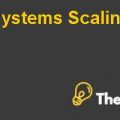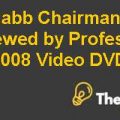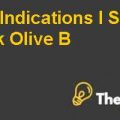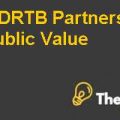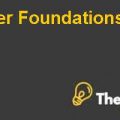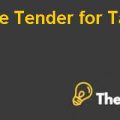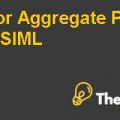Cisco Case Case Study Solution
Operating profit margin
In addition to this, the operating profit margin is also increasing showing that the company is making enough profit even after deducting expenses indicating that the company is efficiently managing its expenses and is generating enough operating income to pay off the interests arising from its debts.
Current ratio
Furthermore, the current ratio of the company has increased from 3.13 in the year 2015 to 3.16 in the year 20916 which depicts that the ability of the company to pay off its short term liabilities and obligations has slightly increased also the quick ratio has decreased from 3.29 to 3.11 indicating that the cisco company’s inventories plays a crucial part in paying off its liabilities thus the increasing current ratio may indicate a false alarm that company can pay off its current liabilities as inventories are the reason behind this and if inventories are removed the company’s ability to pay off its liabilities has decreased .thus, in a nutshell, the company’s liquidity position is not better in the year 2016 but there’s a positive side that it’s not as worst as it can be for the year.
Debt to equity ratio
Cisco Company’s high debt to equity ratio depicts that the company is highly geared and heavily depend on its debt than equity. The debt to equity ratio has increased from 42% to 46% within a year indicating that the company unable to keep its debts lower.
Interest coverage ratio
In addition to this, the interest coverage ratio of the cisco company has decreased from 33.41 times to 20.33 times which is something to be assessed thoroughly as the company’s ability to pay interest on debts has decreased with a significant amount within a year and if it continues to reduce significantly the company will have a high debt burden which will eventually lead to bankruptcy and liquidity.
Return on equity
The company’s profitability can be assessed by return on equity, but cisco company’s ROE has decreased significantly from 15r%to 5% from 2015 to 2016 .the ROE of the company has significantly decreased which shows that the company is not generating profit is relation to the shareholders equity.
P/E ratio
The P/E ratio of the company measures the expected price of the company on the basis of its earnings. it is unusual that the sales are increasing over the period but the p/e ratio of cisco company has decreased in the year from 10.02 to 9.60 that indicates that the expectations from the company in the market has decreased slightly and the maybe the investors are not looking forward to invest more in the cisco company. However, high price to earnings ratio isn’t always a benchmark to invest in a company and having a high price to earnings ratio does not depicts that it’s the better investment as it may also mean that the stock of the company is overvalued.
Table 1 summarizes the whole ratio analysis.
Table -1: Ratio Analysis
| RATIO ANALYSIS | 2016 | 2015 | |
| GROSS PROFIT MARGIN | (Revenue-cost of goods sold)/Revenue | 62% | 40% |
| OPERATING PROFIT MARGIN | (Operating profit/ revenue) | 28% | 22% |
| RETURN ON EQUITY | (net income/shareholder's equity) | 0.049 | 0.150 |
| P/E RATIO | (Market Value per Share/Earnings per Share) | 9.60 | 10.02 |
| DEBT TO EQUITY RATIO | (total debt)/(total equity) | 46% | 42% |
| INTEREST COVER | (PBIT/ Interest) | 20.33 | 33.41 |
| CURRENT RATIO | (Current Assets/Current Liabilities) | 3.16 | 3.13 |
| QUICK RATIO | (current assets–inventories)/current liabilities | 3.11 | 3.29 |
The above analysis can be used by the Stark to assess that investing in the Cisco Company will be beneficial or not or how efficiently the company will use this investing in generating profits and in sustaining its growth.
Horizontal Analysis
The horizontal analysis helps in evaluating the change and trend in the financial statement over the period of time. It provides investor with the information that what factors are driving the financial performance of the company and spot growth patterns and trends.
Revenue and Gross Profit Margin
The total revenue for the year is increased by 0.17% mostly because of the services they provide as the services provided to its customers have increased by as 5.10% as compared to the product which decreases to 1.31% whereas the gross profit of the cisco company shows increasing trend which is because of the cost of sales as in the 2016 the cost of sales decreased by 7.91%
Research and Development Expenses
The research and development expenses shows an increasing trend which is also justified as due to the increase in the sales of the company the CISCO company needs to invest on the research and development as the industry in which it operates requires constant innovation.
Sales and Marketing Expenses
The sales and marketing expenses shows a decreasing trend which is justified in terms that Cisco owns the market and have high reputation so decreasing the expenses on marketing will not much affect the sales of the company.
General and Administrative Expenses
The decreasing trend in general and administrative expenses of 11.08% depicts that the cisco company is efficient in controlling its expenses which share a part in increasing its operating income.
Restructuring and Other Charges
Restructuring and other charges decreased significantly by 44% this plays a vital role in increasing operating income for the year 2016 seems like company is not looking forward to restructure this also creates optimistic point that if the company is not restructuring itself in the coming years the operations will be smooth and will not affect the growth and sales of the business.
Interest Expenses
The interest expenses shows increasing trend which is justifiable as the company have a high gearing ratio and its highly geared indicating that it has to pay enough amount to its debt holders leaving behind a very small share for its shareholders.
Table-2 shows the horizontal analysis of Cisco.
Table-2: Horizontal Analysis
| HORIZONTAL ANALYSIS: | |||||
| INCOME STATEMENT FOR THE YEAR 2015 AND 2016 | |||||
| Years Ended | July 30, 2016 | July 25, 2015 | Growth | ||
| REVENUE: | |||||
| Product | $ 37,254 | $ 37,750 | -1.31% | ||
| Service | 11,993 | 11,411 | 5.10% | ||
| Total revenue | 49,247 | 49,161 | 0.17% | ||
| COST OF SALES: Product |
14,161 | 15,377 | -7.91% | ||
| Service | 4,126 | 4,103 | 0.56% | ||
| Total cost of sales | 18,287 | 19,480 | -6.12% | ||
| GROSS MARGIN | 30,960 | 29,681 | 4.31% | ||
| OPERATING EXPENSES: | |||||
| Research and development | 6,296 | 6,207 | 1.43% | ||
| Sales and marketing | 9,619 | 9,821 | -2.06% | ||
| General and administrative | 1,814 | 2,040 | -11.08% | ||
| Amortization of purchased intangible assets | 303 | 359 | -15.60% | ||
| Restructuring and other charges | 268 | 484 | -44.63% | ||
| Total operating expenses | 18,300 | 18,911 | -3% | ||
| OPERATING INCOME | 12,660 | 10,770 | 18% | ||
| Interest income. | 1,005 | 769 | 31% | ||
| Interest expense | (676) | (566) | 19% | ||
| Other income (loss), net | (69) | 228 | -130% | ||
| Interest and other income (loss), net | 260 | 431 | -40% | ||
| INCOME BEFORE PROVISION FOR INCOME TAXES. | 12,920 | 11,201 | 15% | ||
| Provision for income taxes | 2,181 | 2,220 | -2% | ||
| NET INCOME | $ 10,739 | $ 8,981 | 20% | ||
Alternatives
The set of alternatives are recommended to Stark to make strategic decision on the basis of the current and past performance of the company. It would allow him to predict the performance of the company in near future more realistically. He could make a use of the historical company’s data as it provides the valuable insights on predicting the company’s future performance...........
This is just a sample partical work. Please place the order on the website to get your own originally done case solution.

